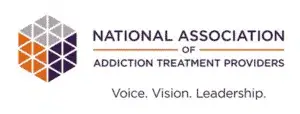College binge drinking facts show that drinking is common on college campuses but comes with risks, like developing an alcohol use disorder.
College drinking is widespread. According to a 2023 report from the National Institute on Alcohol Abuse and Alcoholism, 49.6% of full-time college students drink within a given month and 29.3% binge drink. Binge drinking, defined as five or more drinks in a sitting for men and four or more in a sitting for women, may be common but comes with serious risks.
Dangers and Consequences of Alcoholism in College
Unfortunately, binge drinking in college students can lead to numerous problems, including developing an alcohol use disorder, the clinical term for alcohol addiction. When people develop an alcohol use disorder, they continue to consume alcohol, even when alcohol misuse causes serious consequences.
Alcohol Use Disorder
The 2023 National Survey on Drug Use and Health (NSDUH) reports that 14% of full-time college students between the ages of 18 and 22 meet the criteria for alcohol use disorder.
Poor Academic Performance
Binge drinking among college students is linked to worse academic performance compared to students who do not binge drink or abstain from drinking altogether. Students who binge drink are significantly more likely to miss class or perform poorly on a test or assignment. Continuing to drink despite problems fulfilling duties at school can be a sign of an alcohol use disorder.
This Season, Give Yourself the Gift of a Fresh Start.
Whether you are struggling with addiction, mental health or both, our expert team is here to guide you every step of the way. Don’t wait— reach out today to take the first step toward taking control of your life.
Increased Risk of Injury
According to the Centers for Disease Control and Prevention (CDC), heavy drinking increases the risk of injury from many causes, including automobile crashes, drownings, falls and burns. College binge drinking can lead to risky behavior, putting students at risk of injury. For instance, they may fall when walking back from a bar or party or get into an automobile crash when driving under the influence of alcohol.
Risk of Becoming a Victim of Sexual Assault
Research shows that alcohol intoxication is linked to an increased risk of sexual assault for women. Having problems with alcohol has also been found to be linked to vulnerability to sexual assault. However, this does not suggest that a person is to blame for sexual assault; it simply means that avoiding college binge drinking can reduce a person’s risk of becoming a victim.
Developing Health Issues
Over the long term, heavy drinking can cause numerous health problems. According to the CDC, excessive alcohol consumption is linked to heart problems, high blood pressure, stroke, liver disease and different cancers. Over the short term, binge drinking increases the risk of unwanted pregnancies and sexually transmitted infections.
Higher Risk of Suicide
Binge drinking on college campuses can also increase suicide rates among college students. Studies have found that people who demonstrate suicidal behavior are often intoxicated, and people who misuse alcohol are at a higher risk of suicide.
Death
The NIAAA estimates around 1,500 deaths per year in college students between the ages of 18 and 24 due to alcohol-related injuries. These include automobile crashes.
Why Do College Students Drink?
College students drink for different reasons, many centering around the fact that alcohol is readily available on college campuses. Since college students are more likely to binge drink or drive under the influence than same-aged peers not enrolled in college, it’s not necessarily their age that makes them prone to drinking.
Some common reasons for binge drinking among college students include:
- Peer pressure and social expectations related to drinking
- The presence of Greek life (sororities and fraternities), which tends to create a culture that promotes drinking on college campuses
- The increased freedom of being away from parents
- The desire to fit in with others, especially among younger students
- To cope with stress and other negative emotions
College Drinking and Alcoholism Statistics
The following stats on college drinking provide additional insight into the nature of college binge drinking and alcohol misuse on college campuses:
- Within a given year, about 13% of college students aged 18–22 meet the criteria for an alcohol use disorder.
- Around 25% of college students struggle with school because of drinking.
- A study of 95 college students aged 18–20 who were heavy drinkers found that 9.5% of this group had experienced an accidental injury while drinking.
- Of college binge drinkers, 64% reported skipping class, compared to 12% of non-binge drinkers.
The Risk of Alcohol Poisoning in College Binge Drinking
Another danger associated with drinking is the risk of alcohol poisoning. College binge drinking can cause blood alcohol levels to become so high that basic life functions, such as breathing and heart rate, begin to shut down. When this happens, a person is said to suffer from alcohol overdose or alcohol poisoning.
Some signs that a person is overdosing on alcohol and requires immediate medical attention include:
- Confusion
- Being unable to remain conscious or awaken
- Vomiting
- Seizures
- Slowed or irregular breathing
- Slow heart rate
- Blue or pale skin
- Clammy skin
- Low body temperature
If someone you know shows signs of alcohol poisoning, it’s important to immediately contact 911 or take them to the nearest emergency room. If you’ve been engaging in underage drinking and are fearful of calling for help, remember that Good Samaritan Laws protect bystanders from being prosecuted for underage drinking or alcohol consumption if they’re helping in the case of a medical emergency.
Help for College Students Struggling With Binge Drinking
College binge drinking comes with serious risks, and for those under the age of 21, any level of drinking is illegal and can lead to legal problems, such as probation or expensive fines. If you cannot reduce your alcohol consumption, even when you experience consequences from drinking, you may have an alcohol use disorder. In this case, brain changes from ongoing alcohol misuse make it difficult for you to stop drinking.
When you’re having trouble reducing your drinking, you may benefit from seeking help for alcohol addiction. A treatment program can help you overcome the effects of alcohol misuse and find ways to cope without turning to alcohol. A range of treatment options is also available, including inpatient rehab, in which you live on-site at a treatment facility, and outpatient services, which allow you to live at home or on campus, so you can continue to attend school and work while in treatment.
If you’ve been drinking heavily, you may experience alcohol withdrawal symptoms when you try to give up drinking. In some cases, alcohol withdrawal can be dangerous and even fatal. It’s important to consult with a medical provider if you are concerned about alcohol withdrawal side effects. Since withdrawal can be complicated, it’s often best to complete a medical detox program before entering alcohol rehab.
For those seeking alcohol treatment, The Recovery Village Palmer Lake offers a full continuum of services, including medical detox. We’re located about midway between Colorado Springs and Denver, and our 110-bed facility offers beautiful mountain views. Contact a Recovery Advocate today for same-day admission.









